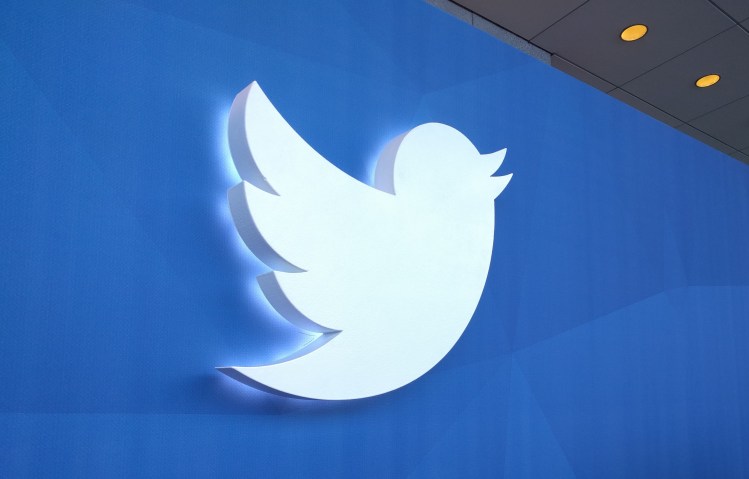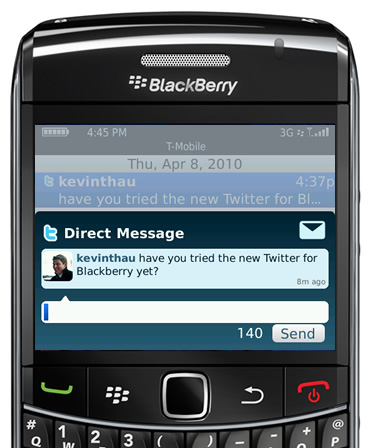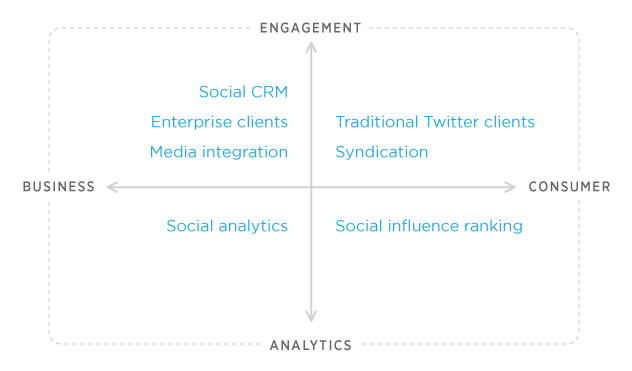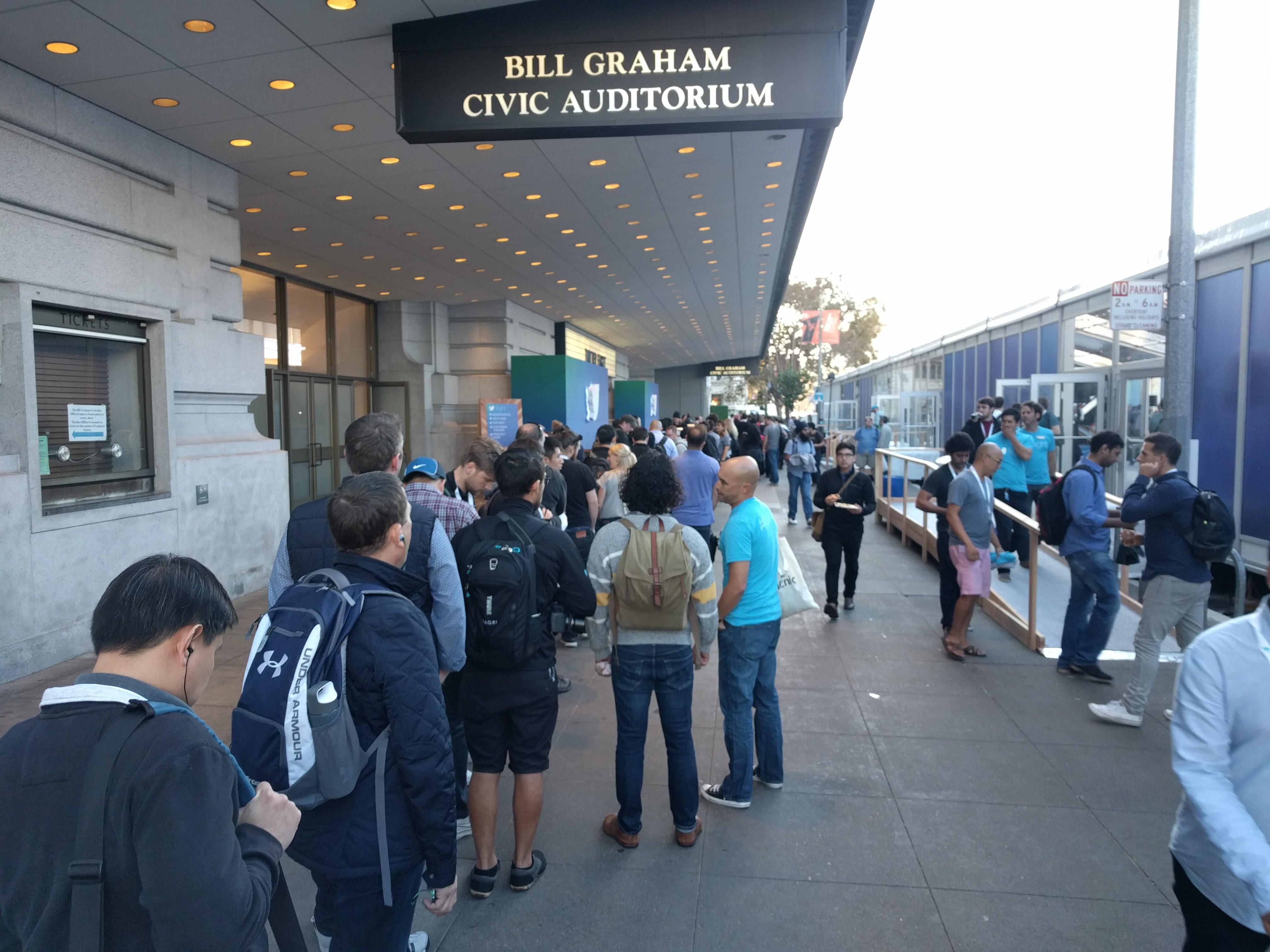Twitter cofounder and chief executive Jack Dorsey yesterday came to Jesus and apologized to developers. Why? Because there have been mistakes. One after another after another.
If you have forgotten some of these mistakes, don’t worry — I have here a handy list for you.
1. Twitter launches “official” BlackBerry app
Twitter released an app for BlackBerry (remember that?) in April 2010, as a result of a close collaboration with Research in Motion, the company behind BlackBerry. The app was branded with an “official” label, and it used the signature lowercase “t.”
Maybe that doesn’t seem like a huge deal, but there were already a few Twitter apps for BlackBerry, including UberTwitter and Seesmic.
Twitter ended up backtracking and pulling off the “official” part.
Twitter platform head Ryan Sarver wrote in an email to the developer community that “the Blackberry client should never have been labeled ‘official.’ It has since been changed and you won’t see that language used with Twitter clients in the future.”
The “official” tag essentially made other Twitter apps for BlackBerry “unofficial.” In effect, Twitter was pushing third-party developers out of the picture. Hence the rollback.
2. Twitter buys Tweetie
Literally one day after announcing the BlackBerry app, Twitter announced that it had bought Atebits, the company behind the independent Twitter iOS app Tweetie.
“People are looking for an app from Twitter, and they’re not finding one. So, they get confused and give up. It’s important that we optimize for user benefit and create an awesome experience,” Twitter cofounder Ev Williams wrote in the blog post on the news.
Until that point, Twitter had depended on third-party developers to provide mobile tools for users — on iOS there were already apps like Echofon and TweetDeck. Now they had to compete with Twitter, the very source of the data that was populating their apps. (Of course, Twitter went on to buy TweetDeck in 2011.) This is a little like Apple launching native apps to compete with third-party services — think Apple Music and Spotify, or Apple News and Flipboard — or like Amazon Web Services launching a service that’s similar to something its customers offer. It’s just not cool.
By this point, Twitter was under pressure to monetize, and executives were still trying to figure out how to turn Twitter into a moneymaker.
3. Twitter freezes Chirp dev conference
Twitter spokesman Sean Garrett told AllThingsD in 2011 that Twitter was “going to do more low-key stuff before we go big again,” following the company’s inaugural 2010 conference.
By doing so, Twitter effectively canceled what could have been an annual party to celebrate its developer community. The drought continued in 2012 and 2013.
Ultimately, Twitter righted itself in this respect: The company held the Flight developer conference in 2014, and yesterday Twitter held Flight for the second time.
4. Twitter gets territorial
In a 2011 message on the Twitter API email list (now deleted), Sarver was the bearer of bad news, as chronicled by the IDG News Service:
Developers have told us that they’d like more guidance from us about the best opportunities to build on Twitter. More specifically, developers ask us if they should build client apps that mimic or reproduce the mainstream Twitter consumer client experience. The answer is no.
If you are an existing developer of client apps, you can continue to serve your user base, but we will be holding you to high standards to ensure you do not violate users’ privacy, that you provide consistency in the user experience, and that you rigorously adhere to all areas of our Terms of Service.
5. That time Twitter made a quadrant
It only got worse for Twitter, and Sarver ended up weighing in on specific apps.
To clarify a little, @storify and @favstar in in the upper-right quadrant but we mean to call them out as good examples. hope that helps :)
— Ryan Sarver (@rsarver) August 16, 2012
@hunterwalk @storify @klout "we're trying to encourage activity in the upper-left, lower-left and lower right quadrants" both in lower right
— Ryan Sarver (@rsarver) August 16, 2012
6. Twitter announces stricter API rate limits
Twitter vice president of product Michael Sippey announced in a 2012 blog post that, going forward, developers would need permission if their apps “will require more than 100,000 individual user tokens.” Most individual endpoints would only be able to be pinged through the Twitter API 60 times per hour; a handful of popular endpoints could be pinged up to 720 times an hour. But before, the API had a rate limit of 350 calls per hour for any kind of information, so for the most part this meant fewer updates for apps drawing on data from Twitter.
The thing is, this wasn’t so much about limiting Twitter’s server load as it was being more restrictive on data availability. Server load was an issue when rate limits were first instituted at Twitter in 2007.
The 100,000-user limit still irks developers to this day, for bigger apps like Tweetbot to smaller ones.
“As a developer of Twitter clients, I really would like you to ask the folks at Twitter on the record if apps that use their tools get automatically excepted from the Twitter imposed 100K user lifetime limit?” Andrew Donoho, the person behind the Retweever, told me in an email today.
All they will tell me is that it depends. They then offer no acceptance guidance nor will they preflight the process. IOW [in other words], I have to invest and they can say no at the end. Only a fool follows that path.
7. Twitter yanks LinkedIn, Tumblr, Instagram integrations
LinkedIn officially announced in 2012 that tweets would stop appearing on LinkedIn, forcing people to manually announce updates from within LinkedIn.
Instagram’s API access also got cut off in 2012, three months after Facebook bought Instagram.
And a few weeks after that, you could no longer find Tumblr friends using data from Twitter.
8. Twitter threatens Twitpic
“A few weeks ago Twitter contacted our legal demanding that we abandon our trademark application or risk losing access to their API,” Twitpic founder Noah Everett announced in a blog post in September 2014. “This came as a shock to us since Twitpic has been around since early 2008, and our trademark application has been in the USPTO since 2009.”
But ultimately Twitter took over the Twitpic domain and photo archive.
9. Twitter cuts off Meerkat — and buys Periscope
Oh boy. That happened just a few months ago.
Twitter barely gave official confirmation of the Periscope acquisition.
10. Twitter kills Politwoops
First Twitter stopped allowing API access for the Sunlight Foundation’s Politwoops site, which saved and displayed politicians’ deleted tweets, in the U.S. The ban expanded to other countries in the weeks after that.

Above: At the Twitter Flight conference in San Francisco on Oct. 21.
Twitter needs developers
Twitter needs developers, most directly because they can make Twitter’s content go further and become more valuable. So it’s not a surprise to see Dorsey come forward with conciliatory rhetoric, particularly while his return to the chief executive position at the company is still fresh in people’s minds.
“Somewhere along the line, our relationship with developers got confusing, unpredictable,” was how Dorsey put it. “We want to come to you today and apologize for the confusion. We want to reset our relationship and make sure that we’re learning, listening, and that we are rebooting. That’s what today represents.”
The open question is how the apology will be received by its intended audience.
https://twitter.com/dberkholz/status/656943421823852545
For more on this subject, here’s Twitter’s argument for why developers should give it a second chance.






